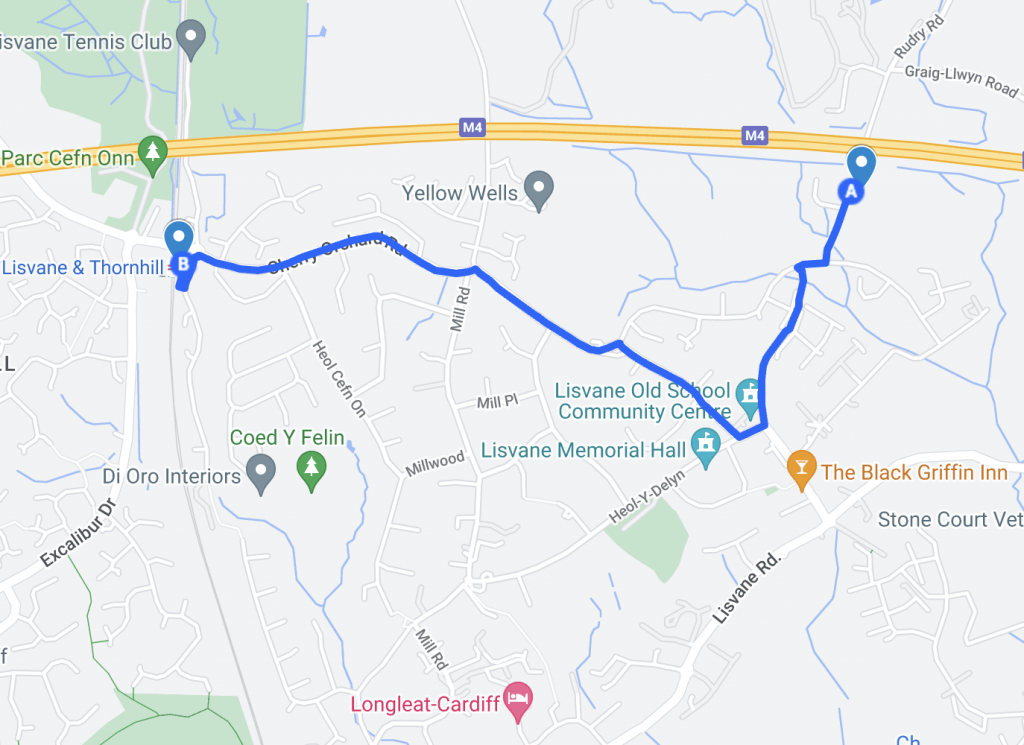While there is funding allocated to improve transport links, residents’ experience leaves them unconvinced
RESIDENTS are concerned about inadequate bus services after Cardiff Council gave the green light for over 200 new homes to be built in Lisvane.
Full planning permission for the construction of 61 new homes at the Church Farm site was granted last week, while a further 144 were given outline permission.
But there are growing concerns that the already sparse bus services will become overcrowded amid rapidly increasing demand.
“The buses are non-existent here,” said Graham Cole, who lives directly next to the site along the M4 corridor.
“I often have to walk 1.6 miles to get home if I go out in the evenings because the buses do not run back to Lisvane at that time.
“The only option is to drive really.”
The 63-year-old, whose family have lived on the land next to Church Farm since 1923, is worried that the current bus system will not be able to cope with an influx of new people.
Lisvane Community Council, which has long been in opposition to the plans, outlined the struggles that residents have.
“The nearest train station is a 30-minute walk away from Church Farm,” said Council Clerk, Hadyn Davies.
“It takes about an hour for the number 86 to reach the city centre and funding for that route expires at the end of March. Potentially, there may be no service at all.”

The number 86, which connects Lisvane to Heath and the city centre, has an outbound last departure time of 3pm with the last bus on the way back leaving at 5:30pm.
The service does not run on Sundays.
The Section 106 problem
As part of the proposal, developer Redrow has pledged £720,000 to help mitigate increased traffic and transport demands.
Some £100,000 of that amount has been set aside to improve bus routes and £360,000 has been earmarked for “bus lane improvements”.
However, this agreement falls under the Section 106 requirements of the plans. A section 106 clause is an agreement that a financial contribution will be paid by developers to mitigate any adverse impact on the area by new developments.
When contacted, both Cardiff Council and Redrow were unable to provide further clarity on the plans, as the Section 106 agreement is yet to be signed.
- READ MORE: What is a Section 106 agreement?
Mr Cole, however, is “doubtful” of Cardiff Council’s ability to enact Section 106 plans once they receive the money.
“If the [Section 106 money] isn’t used within a certain timeframe, the developer can just claim it back,” he said.
“There are always ways to get around these things. If you’re making a lot of money out of a development, you should put something back into the local area.”
There are two bus stops close to Mr Cole’s house on Clos Gwenllian that have, according to his wife Andrea, “never seen a bus in their life.”
“They were built after one of the previous developments, but there are no bus routes attached to them,” she said.
The lack of improvement has also been noted by Mr Davies of Lisvane Community Council.
“Hundreds of houses have been built in Lisvane over the last five to six years and yet the bus service is worse than ever.
“Some of these developments are not due to be completed for at least another 10 years, it goes without saying that we think the council have got this wrong,” he said.
Of the 61 new houses to be built, 18% will be affordable housing, 15% will be council houses and 3% will be sold at a discounted value.



